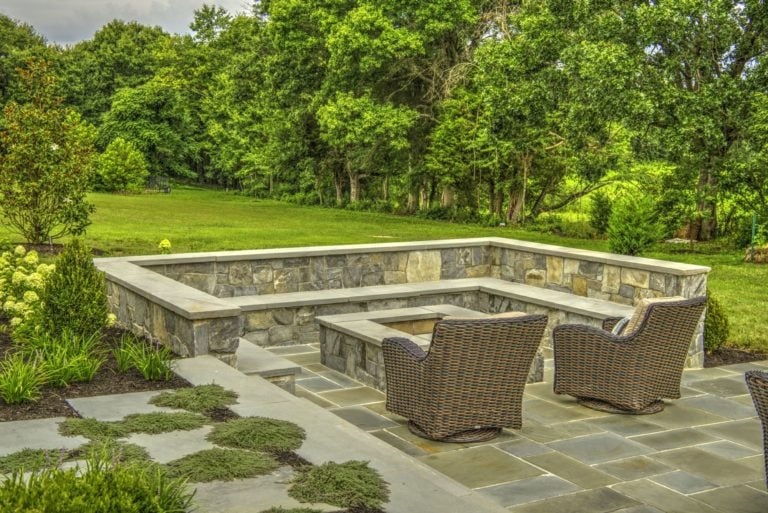Your landscaping, including the plants and flowers in your plant beds, are part of what makes your Northern Virginia landscaping beautiful and enjoyable. Nothing quite adds to curb appeal or even backyard enjoyment like greenery and lovely blooming plants.
Perennials can be a great addition to your plant beds. Thanks to the fact that they keep coming back, perennials can provide a lot of value for your investment. You pay for perennials once and can get many years (sometimes even decades) out of them.
Because of this, perennials can make a lovely foundation for your plant beds. Oftentimes, homeowners like to mix in bursts of color and wow factor with annuals as well.
Of course, in order to get the most out of your perennials, you’ll want to take good care of them. One necessary task is dividing perennials. This will not only help you to get the most out of these plants, but it will also help to keep your plant beds neat and tidy (as well as aesthetically pleasing).
When perennials are not divided, they can sometimes grow too large for the space they're in or even begin to compete with the other plants for vital needs like water and nutrients.
In this article, we’ll talk about all the important facts you need to know about dividing perennials. This includes the best time to divide perennials as well as how to go about the task.
What are the Benefits of Dividing Perennials?
As we’ve already alluded to above, splitting perennials is an important task not only for aesthetic purposes but also for the overall health of your plant beds.
That’s because if given the chance to continue to grow and expand, certain species of perennials can really begin to take over your plant beds. This might not only detract from the beauty of the plant bed’s variety but also cause a potential problem as the perennials start to compete with your other plants. Fast-growing perennials like hostas can eventually “take over” an entire plant bed if given the chance.
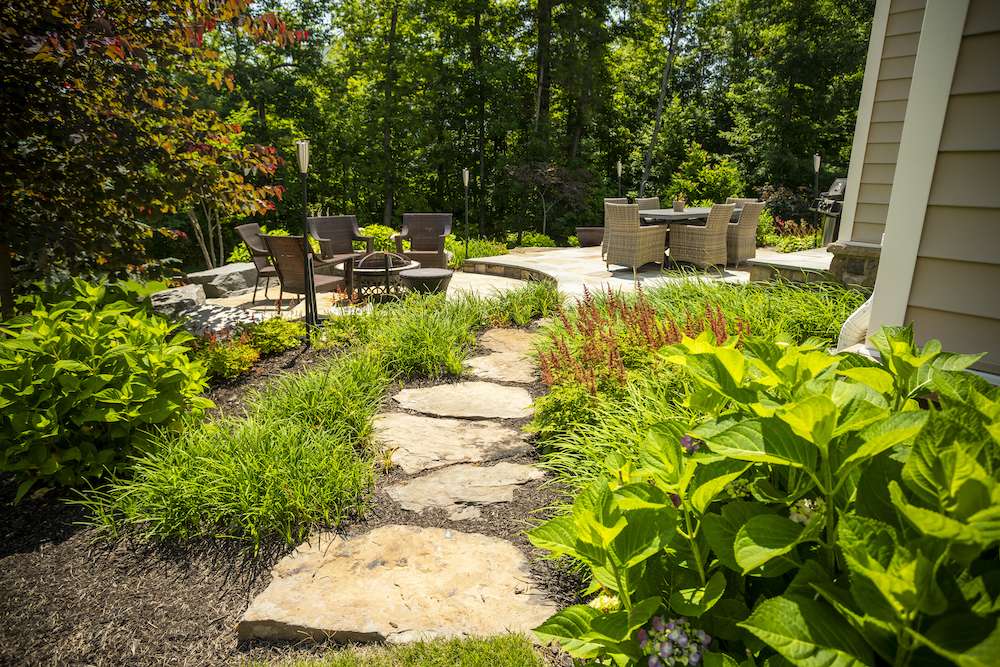
Some of the perennials that need to be divided every few years include various species of ornamental grasses, hostas, daylilies, daisies, astilbe, and peonies. But most perennials that grow too large for the space they’re in can be divided.
When you go through the process of splitting perennials you are helping to keep your plant beds neat and tidy as well as healthy and thriving. The latter means that you’ll promote good plant health with optimal bloom time and overall performance.
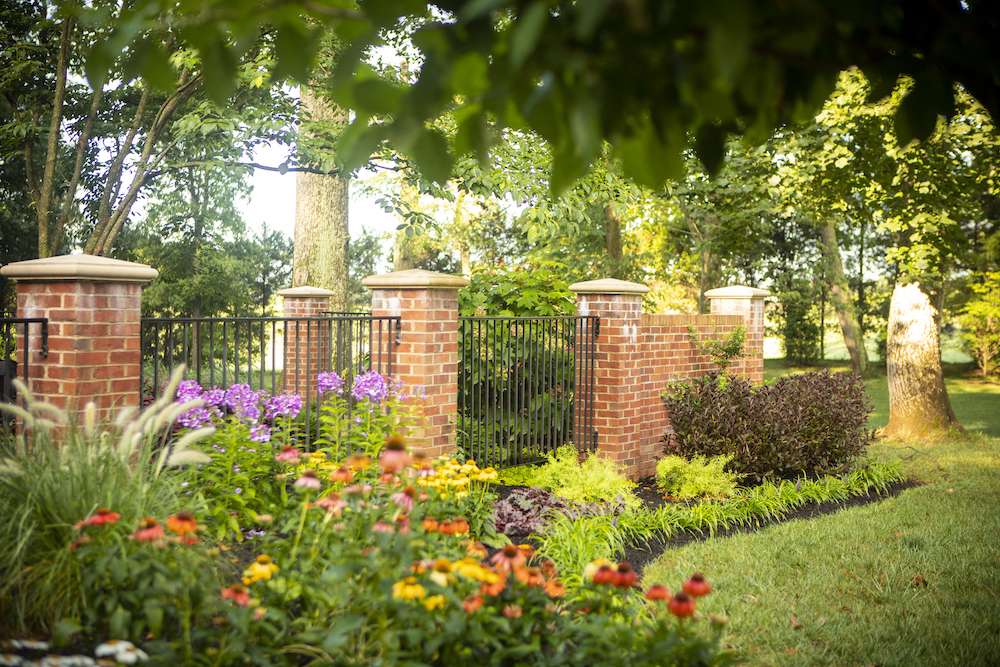
Dividing perennials also saves you money because you can add plant material to another area of your property without having to invest more. Of course, some people also like to give their divided perennial to friends or family members if they don’t have a place for them on their property.
When to Divide Perennials in Northern Virginia
There is definitely some leeway when it comes to the best time to divide perennials.
Early spring through early summer can be a good time to divide most perennial plants. This will provide ample time for the plants to become established ahead of the winter weather.
While the spring is often thought of for planting (and this is definitely a time when spring annual flowers are popular), the fall can also be an excellent time for dividing perennials.
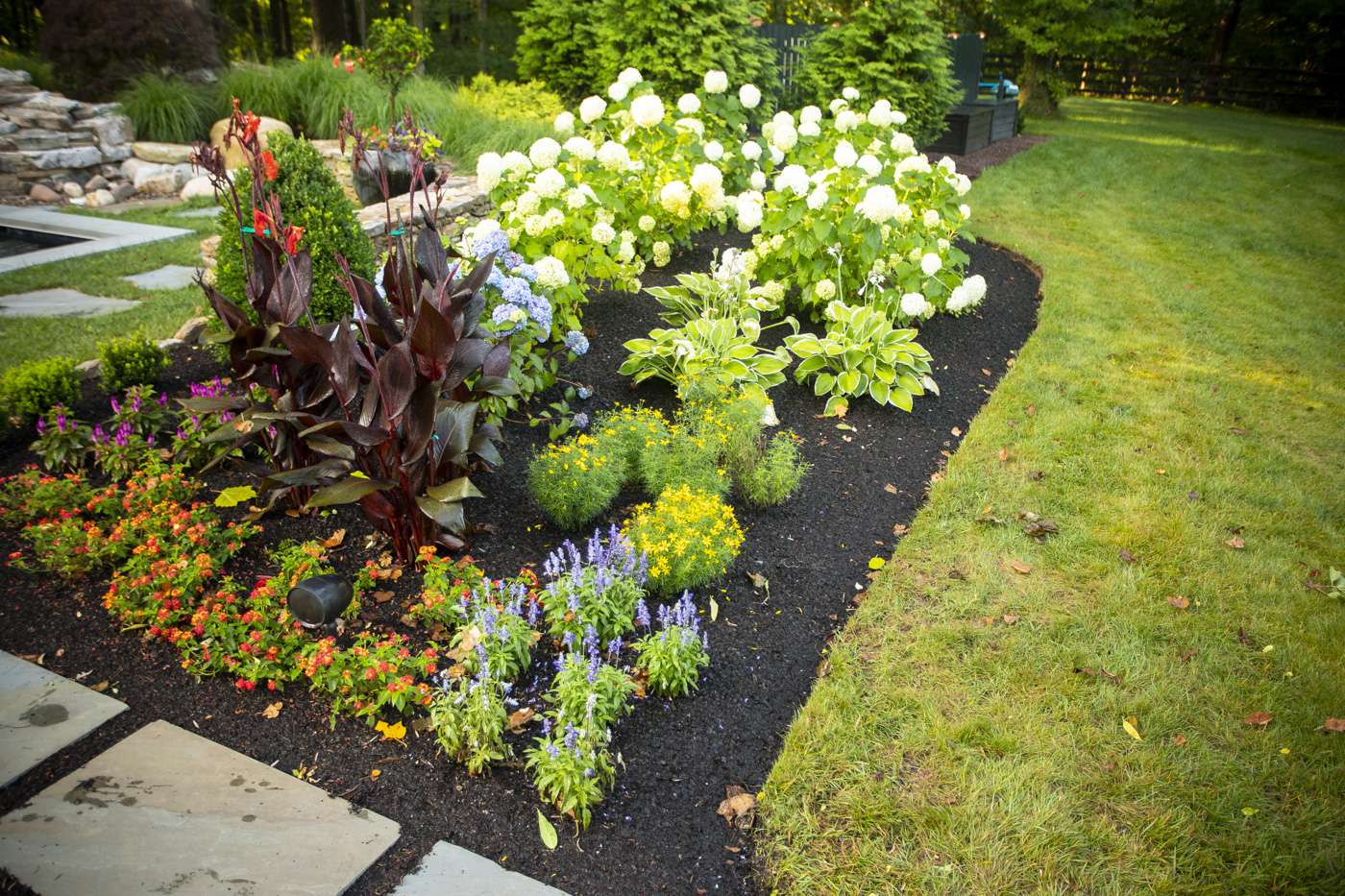
One reason that the fall is great for planting (in general) is that the weather has cooled down a bit but the soil is still warm. Your plants will not have to forgo the stress of the summer heat.
Of course, as it gets later into the fall, you’ll need to stick to cold-tolerant perennials so that you don’t lose any plants to the cold weather. It’s important to keep in mind that the process of re-planting a transplanted perennial can be a bit stressful on the plant. You don’t want to add to that with extreme weather conditions.
How to Go About Dividing Perennials
Now that you understand the why and when to divide perennials, you likely want to know how to divide perennials.
- First and foremost, we recommend making sure your perennials are well-watered before getting the process started. This is going to make them easier to dig up. You could divide the plants right after a good rain shower or simply take some time to water them.
- Next, dig into the soil with a garden fork or spade, loosening the soil around the plant.
- Gently begin lifting the plant from the soil. Make sure that you are beneath the root ball as you lever it all up and out of the ground.
- Shake any excess dirt from the roots.
- Now, separate the plant into sections. Each clump will need a set of leaves and roots to grow so be careful as you perform your division.
- Finally, you’ll want to replant your divided sections as quickly as possible so that the roots are not drying out. Re-install the plants into your existing plant bed at the same depth they were growing at. Move any additional perennials to their new places as quickly as possible. Make sure they are watered in their new location.
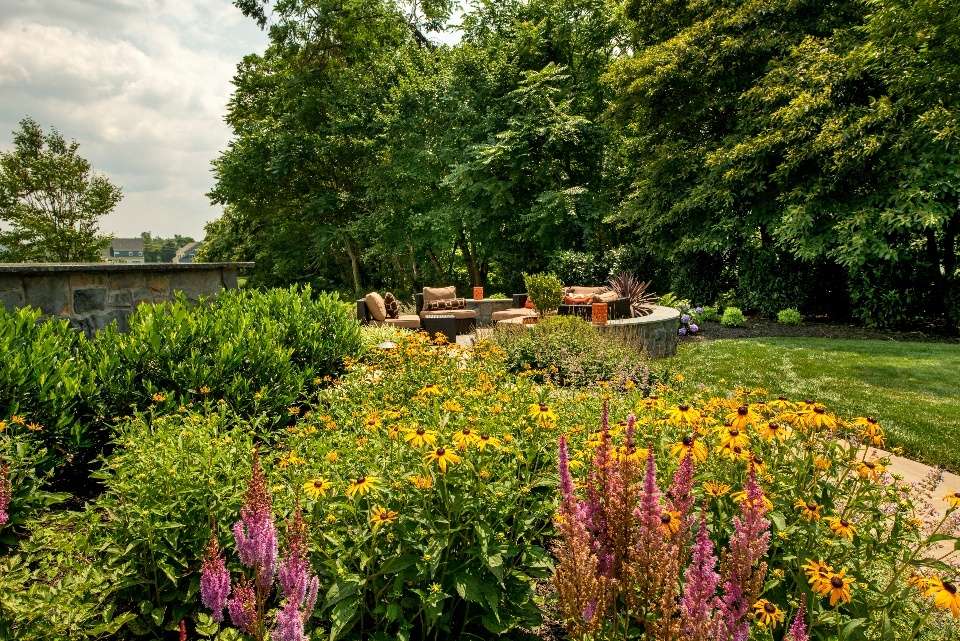
That’s the general process. You can go through repeating it depending on how many plants you are planning to divide. Keep in mind if you are not replanting the perennials right away, you can put them in pots. If you are gifting them to someone else, just make sure that you don’t let the roots dry out.
Having a Professional Landscaper on Your Side
We know that dividing perennials is not rocket science. In fact, it’s a task that some of our clients really enjoy. We have some clients who love gardening as a hobby and they enjoy periodically tending to their plant beds and splitting perennials when the need arises. For some, it can be therapeutic and an opportunity to spend time outside working in the dirt.
Of course, we know it’s not for everyone.
We have some clients who really don’t want to worry about their plants and just want to know they’re being taken care of (and will continue to look their best). These clients want to be hands-off and don’t want to worry about when to plant new plants or how to take care of them once they’re installed.
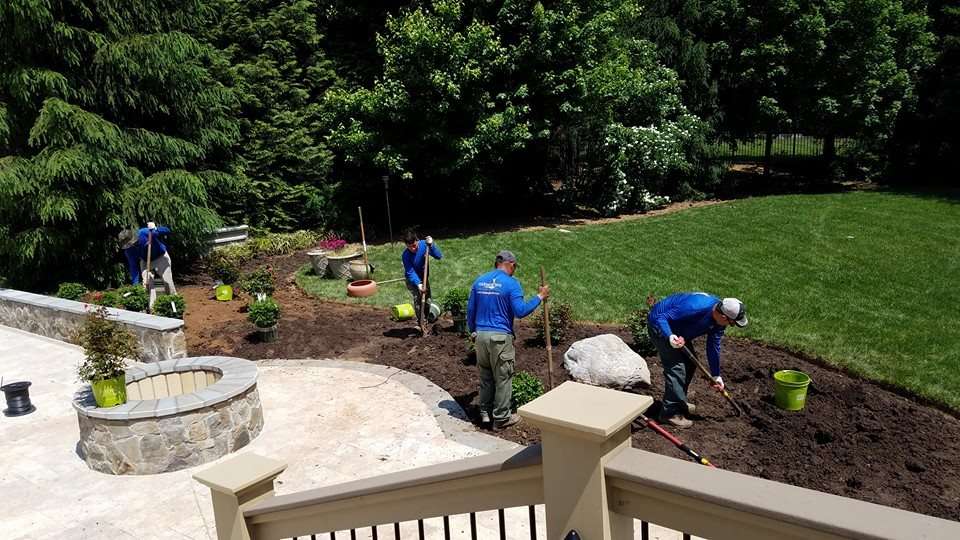
Either way, that’s the beauty of working with a landscaping professional who can meet you where you’re at.
Whether it’s figuring out planting schedules or implementing a full-service landscape maintenance plan to ensure that your plants continue to look their best, you can hand these worries over to a professional if it’s not your cup of tea.
That means that instead of worrying about any of the details, all you’ll have to do is enjoy your beautiful landscape.
Partnering with Rock Water Farm for All Your Landscape Needs
At Rock Water Farm, we install beautiful landscapes and we care for them, too. For our clients who don’t enjoy gardening or plant care as a hobby, we can handle all of the details and remove that burden from your shoulders.
This includes plant installation, mulching and edging, dividing perennials when necessary, plant bed clean-up, plant health care, and so much more.
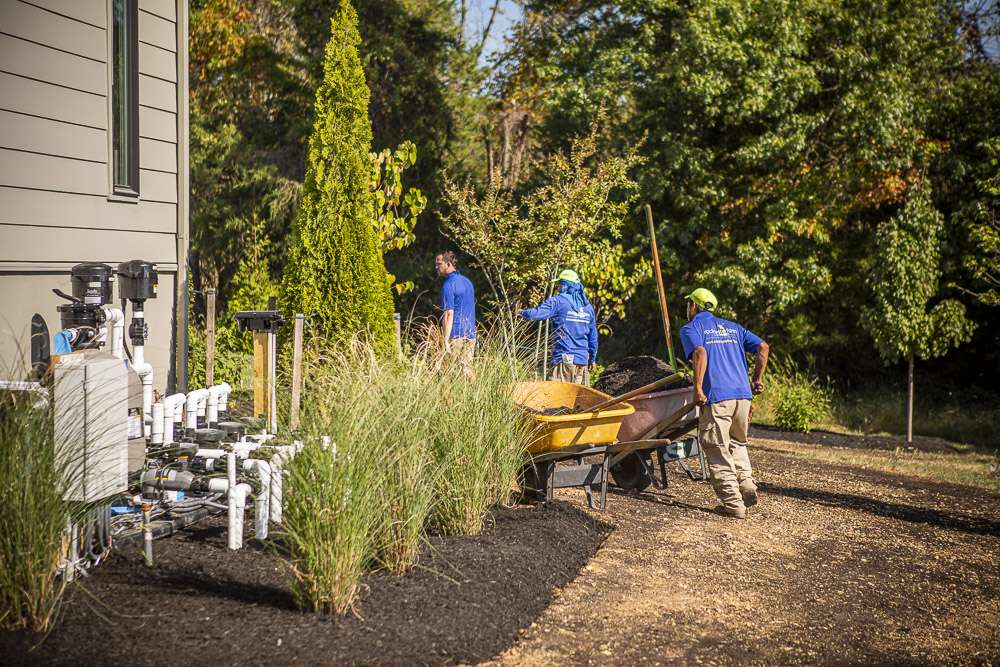
Since every property is unique, we can come up with a plan that is best for you. The goal is to keep your property looking its best no matter what the time of year.
At the end of the day, we know that the best landscape is one that our client truly loves (and that inspires them to spend more time outside).
We’re here to help you achieve that end goal in whatever way makes the most sense for you. If you want to handle some of your landscaping tasks, like splitting perennials, on your own then just let us know. But if you’d like us to build that into our maintenance program, we can do that, too.
Whatever the case may be, we are here to help you get the most out of your Northern Virginia property.
Are you ready to have a property that you are proud of at your Haymarket, Gainesville, or Round Hill, VA home? If so, talk to an expert, choose a solution that rocks, and get ready to see your dreams begin to take shape!



%20Facebook%202025-03-17%20at%201.11.44%20PM.jpg)

